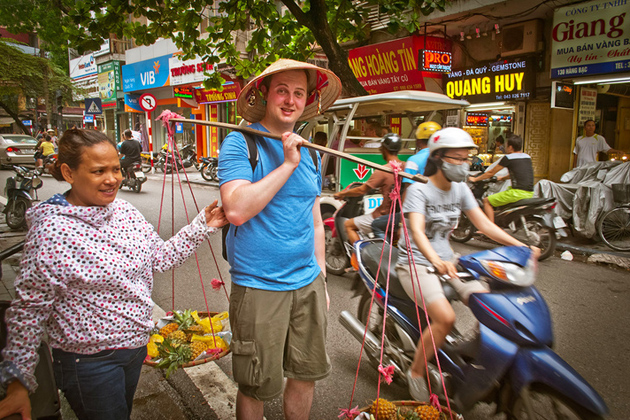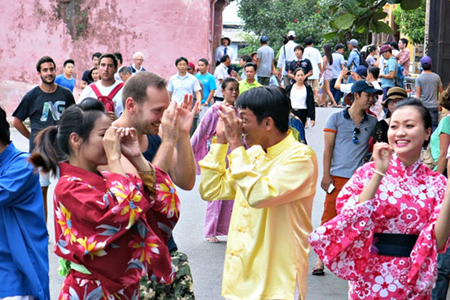Being affected by Chinese domination, Han characters used to be Vietnamese’s main language. In the 13th century, they invented their own written variation - Nom. In the 17th century, missionaries created Quoc Ngu formed from Romance. Thanks to that invention, Vietnamese language today has many similar letters like English that makes it easier to recognize and pronounce than several other languages. Here is the useful list of 10 essential phrases for foreign tourists when travelling in Vietnam.

1. Hello
Vietnamese: Xin chào /sin jow/
This is the most general way to greeting in Vietnam.
The word “chào” means “hello” or “hi” in English but Vietnamese rarely use it alone. In fact, they will add more words after “chào” based on the age, gender and familiarity of the person they are talking with.
Word “xin” in the front makes the phrase more formal and polite. Non-native speakers can use it in the first meet or when they know nothing about the other person.
2. Goodbye
Vietnamese: Tạm biệt
This phrase is used when you want to say goodbye to someone.
3. How are you?
Vietnamese: Bạn có khỏe không? (ban co kwe khome?) also, Bạn thế nào?
This is a general way to use when you want to know current situation of other person. “Khỏe” means “good” in English.
4. Thank you!
Vietnamese: Xin cảm ơn! (sin gahm un)
Similar to word “xin” mentioned before, it makes the phrase more polite. Basically, you can just say “cảm ơn” to show your gratefulness. Moreover, if you want to say “Thank you very much”, just add word “rất nhiều” in the end like “Cảm ơn rất nhiều”.
5. I’m sorry
Vietnamese: Xin lỗi
This is the basic and simple way to say sorry.
“Lỗi” means “mistake” in English.
6. Good or Bad
Vietnamese: Tốt (thote) - Không tốt (khome thote)
“Tốt” means “good” in English. To negate it, just put “không” meaning “not” in the front.
7. What is this?
Vietnamese: Cái này là gì? (guy nai la zee)
This question is used when you want to ask to know something.
“Gì” means “what”, “là” means “is” and “cái này” means “this”. If you want to ask “What is that?”, let’s change the word “này” into “kia”
8. Where is…?
Vietnamese: … ở đâu?
Just put the address, person or thing, etc. you want to ask its position in the front. For example: “Phố cổ ở đâu?” – “Where is the Old Quarter?”
After that, you can say “Làm sao để đến đó?” – “How to get there?” to get more helps from native speakers.
9. How much?
Vietnamese: Bao nhiêu? (bow nyew)
This is a simple way to ask the price of something you want to buy.
10. Too expensive
Vietnamese: Đắt quá (dat qwa) in the North or Mắc quá (mahk qwa) in the South
If you want to bargain something in purchasing, just say this phrase. “Đắt” and “mắc” have the same meaning of “expensive” in English. However, please notice to use them appropriately in different regions in Vietnam.



